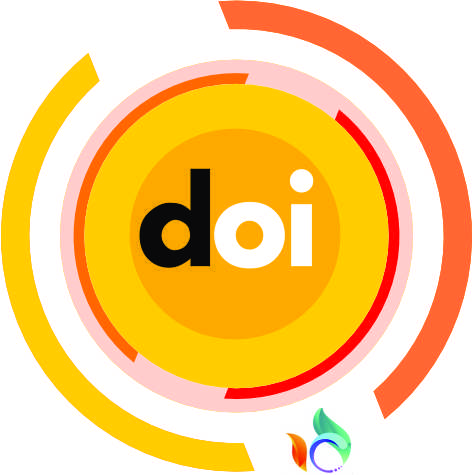Uji Akurasi Arah Kiblat Menggunakan Fitur Kompas Kiblat Pada Aplikasi Quran Kemenag Versi 2.1.4
DOI:
https://doi.org/10.47766/astroislamica.v1i2.951Keywords:
Accuracy, Qibla Direction, Qibla Compass, Kemenag Quran Application 2.14Abstract
Quran Kemenag is an Android-based application or software that is easy to download on the Google PlayStore which has one interesting feature, namely the Qibla compass. The Qibla compass feature is interesting because it utilizes the device's compass sensor that users can immediately find out the Qibla direction indicated by the feature and according to the circumstances of the surrounding environment, starting with calibration first. With the Qibla compass feature in the Quran Kemenag application, it can make it easier for people to determine the Qibla direction and can use it whenever and wherever they are. The purpose of this study is to explain in more detail the method of measuring the Qibla direction using Qibla compass on Quran kemenag application and to explain in detail the accuracy of the Qibla direction using the Qibla compass on Quran Kemenag application. The research method is included in the type of qualitative research that is descriptive (descriptive research) and classified as field research (Field Research), namely direct observation of objects studied in the field. The primary data sources for this research are observation data and measurement results data from features in the Quran Kemenag application Version 2.1.4. The secondary data is reports of collaborative community service activities for lecturers and students. This research found the results that Qibla compass on Quran Kemenag application is very easy to use, namely by opening the application then clicking the compass feature and placing the cellphone on a calibrated flat plane, the feature shows the Qibla direction. The level of accuracy of the Qibla direction from the compass feature is different from the theodolite results, namely by a difference of 1'-2'. So that the differences make the Qibla compass feature on Quran Kemenag application is not suitable to be used as the main reference in determining the Qibla direction, for example for the construction of mosques and meunasah. But this application can be used in an emergency.
References
Azhari, Susiknan. “Ensiklopedi Hisab Rukyat,” 2005, 277. https://books.google.com/books/about/Ensiklopedi_hisab_rukyat.html?id=qT9mAAAAMAAJ.
Cut Nazar Mutia Hanum, and Ismail Ismail. “Pandangan Tokoh Agama Jungka Gajah Terhadap Arah Kiblat Bagi Orang Yang Jauh Dari Ka’bah.” Astroislamica: Journal of Islamic Astronomy 1, no. 2 (December 28, 2022): 169–86. https://doi.org/10.47766/ASTROISLAMICA.V1I2.934.
Dewi Rahayu, and Laiyina Ukhti. “Uji Akurasi Arah Kiblat Menggunakan Azimut Bulan Purnama.” Astroislamica: Journal of Islamic Astronomy 1, no. 1 (June 30, 2022): 01–20. https://doi.org/10.47766/ASTROISLAMICA.V1I1.681.
Hosen, and Ghafiruddin. “Akurasi Arah Kiblat Masjid Di Wilayah Kecamatan Pademawu Kabupaten Pamekasan Dengan Metode Mizwala Qibla Finder.” Al-Ihkam: Jurnal Hukum Dan Pranata Sosial 13, no. 2 (December 21, 2018): 364–81. https://doi.org/10.19105/al-lhkam.v13i2.1837.
İlçi, Veli, İbrahim Murat Ozulu, Ersoy Arslan, and Reha Metin Alkan. “Investigation on the Accuracy of Existing Qibla Directions of the Mosques from Different Periods: A Case Study in Çorum City, Turkey.” Tehnicki Vjesnik 25, no. 6 (2018). https://doi.org/10.17559/TV-20170226111205.
Islam Negeri Walisongo Semarang Jl Hamka Km, Universitas, and Ngaliyan Kec Ngaliyan Kota Semarang. “Typology Jihatul Ka’bah on Qibla Direction of Mosques in Semarang.” Ulul Albab: Jurnal Studi Dan Penelitian Hukum Islam 4, no. 1 (November 1, 2020): 1–15. https://doi.org/10.30659/JUA.V4I1.12186.
Ismail, Ismail. “Standar Operasional Prosedur (SOP) Kalibrasi Arah Kiblat Masjid Di Era Digital.” Al-Marshad: Jurnal Astronomi Islam Dan Ilmu-Ilmu Berkaitan 5, no. 1 (2019): 90–110. https://doi.org/10.30596/jam.v5i1.3126.
ismail, ismail, and Laiyina Ukhti. “Elevasi Dan Titik Koordinat Dalam Penyusunan Jadwal Imsakiah Ramadhan Kanwil Kemenag Provinsi Aceh.” ELFALAKY: Jurnal Ilmu Falak 6, no. 2 (December 14, 2022): 229–52. https://doi.org/10.24252/IFK.V6I2.31150.
Izzuddin, Ahmad. “The Problems of the Relationship between Science and Religion in Qibla Direction Calibration at the Great Mosque of Demak and Baiturrahman Mosque in Semarang, Indonesia.” Journal of Islamic Law (JIL) 3, no. 2 (August 1, 2022): 111–31. https://doi.org/10.24260/JIL.V3I2.823.
Izzuddin, Ahmad, Muhammad Habibur Rahman, and Muhammad Himmatur Riza. “Teleskop Ioptron Cube II Dalam Penentuan Arah Kiblat.” AL - AFAQ : Jurnal Ilmu Falak Dan Astronomi 3, no. 1 (July 19, 2021): 25–40. https://doi.org/10.20414/AFAQ.V3I1.2776.
Mada Sanjaya, W. S., Akhmad Roziqin, Astuti Kusumorini, Dyah Anggraeni, Fikri Ibrahim Nurrahman, Winandar Ganis Kresnadjaja, and Dian Syah Maulana. “The Third Al-Biruni’s Method for the Determination of Qibla Direction from Kitab Tahdid Nihayat Al-Amakin with the Implementation Based on Arduino Board MCU, GPS Module, and Digital Compass.” In 2019 2nd International Seminar on Research of Information Technology and Intelligent Systems, ISRITI 2019, 2019. https://doi.org/10.1109/ISRITI48646.2019.9034634.
Maulidin Maulidin, and Abdullah Abdullah. “Uji Komparasi Instrumen Arah Kiblat Antara Qibla Tracker Dan Mizwala Qibla Finder.” Astroislamica: Journal of Islamic Astronomy 1, no. 1 (June 30, 2022): 73–96. https://doi.org/10.47766/ASTROISLAMICA.V1I1.899.
Miptahudin, Raden Apip, Muhammad Aris Risnandar, W. S. Mada Sanjaya, Mustafa Mamat, Aceng Sambas, and Mohamad Afendee Mohamed. “Qibla Direction Correction Test Using a Digital Compass and Arduino Microcontroller.” International Journal of Recent Technology and Engineering 8, no. 2 Special issue 7 (July 1, 2019): 228–30. https://doi.org/10.35940/ijrte.B1056.0782S719.
Sakirman, Sakirman. “Formulasi Baru Arah Kiblat: Memahami Konsep Rasydul Kiblat Harian Indonesia.” Al-Qisthu: Jurnal Kajian Ilmu-Ilmu Hukum 16, no. 1 (March 31, 2018): 1. https://doi.org/10.32694/010440.
Downloads
Published
Issue
Section
License
Copyright (c) 2022 Santi Okta Sriani, Laiyina Ukhti

This work is licensed under a Creative Commons Attribution-ShareAlike 4.0 International License.









